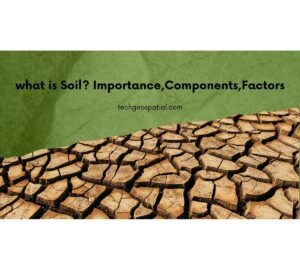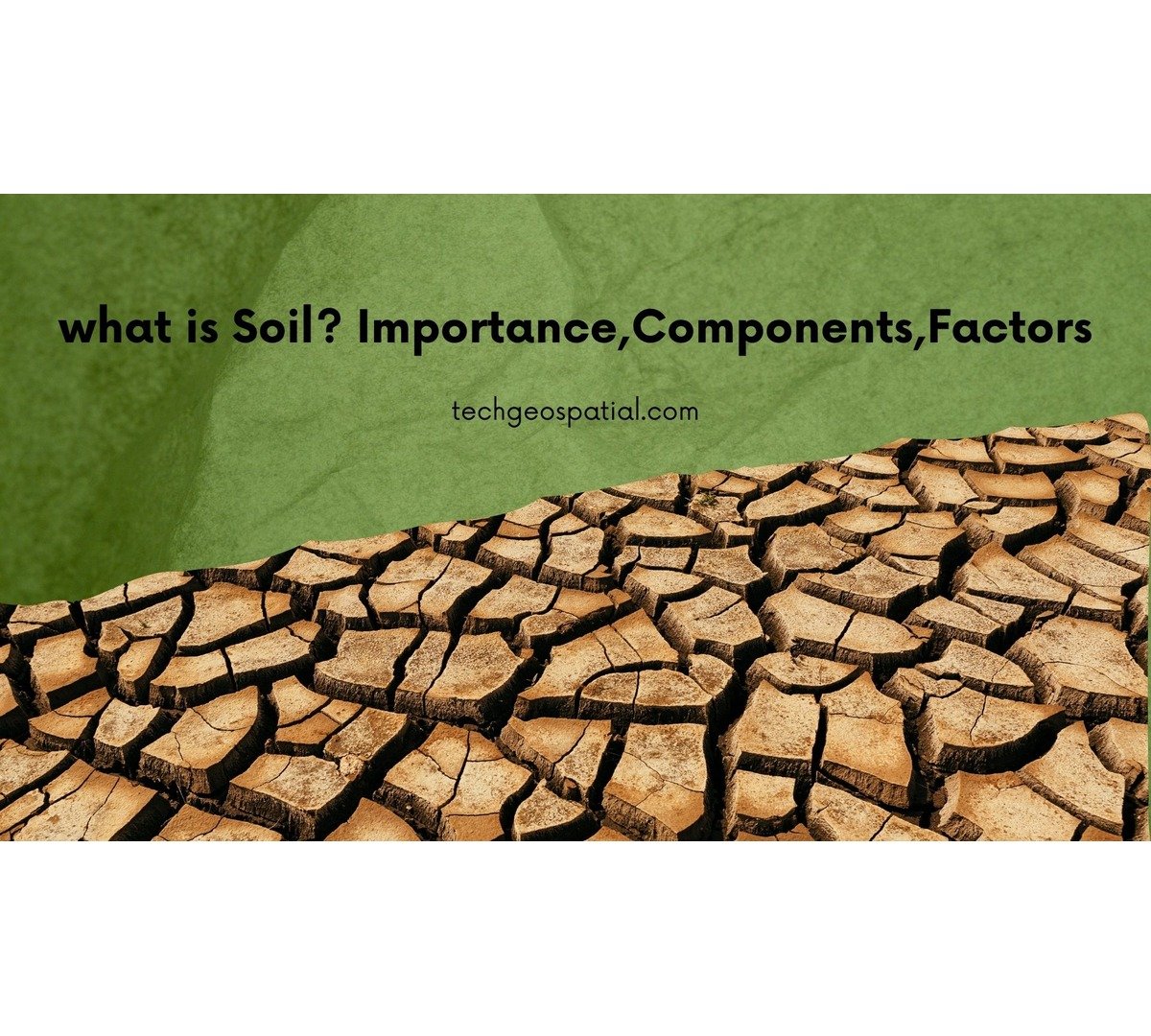Introduction to Soil
Soil, often referred to as the foundation of life, is a dynamic and complex mixture of minerals, organic matter, water, air, and microorganisms. It is the thin layer covering the Earth’s surface where plants grow and ecosystems thrive. Understanding the basics of soil is fundamental to various fields such as agriculture, ecology, and environmental science.
Definition of Soil

Soil is commonly defined as the upper layer of the Earth’s crust that supports plant life. It is a natural resource formed through the weathering of rocks, the decomposition of organic matter, and the activity of living organisms over millions of years.
Importance of Soil
Soil is of paramount importance for sustaining life on Earth. It serves as a medium for plant growth, providing essential nutrients, water, and support to roots. Additionally, soil acts as a habitat for a diverse range of organisms, including bacteria, fungi, worms, and insects, which play crucial roles in nutrient cycling and ecosystem functioning.
Components of Soil
- Mineral Particles: Soil minerals are derived from the weathering and breakdown of rocks and minerals over time. These mineral particles provide the physical structure and texture of soil, influencing its fertility and drainage properties.
- Organic Matter: Organic matter in soil consists of decomposed plant and animal residues, as well as living organisms such as bacteria, fungi, and earthworms. Organic matter enriches soil fertility, improves its structure, and enhances nutrient cycling processes.
- Water: Water is a vital component of soil, essential for plant growth, microbial activity, and chemical reactions. Soil acts as a reservoir, storing water and regulating its availability to plants and other organisms.
- Air: Soil contains pore spaces filled with air, crucial for the respiration of plant roots and soil organisms. Soil air facilitates the exchange of gases, such as oxygen and carbon dioxide, necessary for metabolic processes.
Factors Influencing Soil Formation
Soil formation is influenced by a combination of geological, climatic, topographic, biological, and chronological factors. These factors shape the physical, chemical, and biological properties of soil, giving rise to diverse soil types and landscapes.
- Geological Factors: Geological factors such as parent material, rock type, and mineral composition influence soil formation through processes like weathering, erosion, and deposition. The mineralogy of parent materials determines soil texture, nutrient content, and drainage characteristics.
- Climatic Factors: Climatic factors including temperature, precipitation, and humidity play a significant role in soil formation. Climate influences the rate of weathering, erosion, and organic matter decomposition, shaping soil properties such as color, texture, and depth.
- Topographic Factors: Topographic factors such as slope, aspect, and elevation influence soil formation by affecting water drainage, erosion, and deposition processes. Slope steepness determines the rate of soil erosion, while aspect influences solar radiation and temperature regimes.
- Biological Factor: Biological factors such as plant growth, microbial activity, and animal burrowing contribute to soil formation and development. Plant roots penetrate soil layers, adding organic matter and enhancing soil structure, while soil organisms decompose organic matter and release nutrients essential for plant growth.
- Chronological Factor: The chronological factor refers to the time frame over which soil formation processes occur. Soil development is a slow and continuous process, taking thousands to millions of years to form mature soils from parent materials. Chronosequences, or sequences of soils of different ages, provide insights into the long-term dynamics of soil formation and development.
Soil pH
Soil pH is a measure of the acidity or alkalinity of the soil solution.
Importance of pH in Soil
Soil pH influences the availability of nutrients to plants and the activity of soil organisms. Most plants prefer a slightly acidic to neutral pH range for optimal growth.
Factors Influencing Soil pH
Factors such as parent material, climate, vegetation, and human activities can influence soil pH levels. Acid rain, fertilizer application, and irrigation practices can alter soil pH over time.
Soil Moisture
Soil moisture refers to the water content present in the soil.
Importance of Moisture in Soil
Soil moisture is essential for plant growth, as it affects nutrient uptake, root development, and photosynthesis. Adequate soil moisture also supports soil organisms and ecosystem functions.
Factors Affecting Soil Moisture
Factors such as rainfall, temperature, soil texture, and drainage influence soil moisture levels. Sandy soils drain quickly and may require more frequent irrigation, while clayey soils retain water for longer periods.
Soil Air
Soil contains spaces filled with air, which is crucial for root respiration and microbial activity.
Role of Air in Soil
Soil air provides oxygen to plant roots and soil organisms, facilitating metabolic processes such as respiration and nutrient cycling.
Soil Erosion
Soil erosion is the process by which soil particles are detached, transported, and deposited elsewhere by wind, water, or human activities.
Causes of Soil Erosion
Factors such as deforestation, improper land management practices, overgrazing, and heavy rainfall contribute to soil erosion. Eroded soil can lead to loss of fertile topsoil, decreased soil fertility, and sedimentation in water bodies.
Methods to Prevent Soil Erosion
Various techniques can help mitigate soil erosion, including planting cover crops, contour plowing, terracing, and implementing conservation tillage practices. These methods help to reduce surface runoff, improve soil structure, and protect vulnerable areas from erosion.
Soil Conservation
Soil conservation involves practices aimed at preserving soil resources and preventing degradation.
Importance of Soil Conservation
Soil conservation is crucial for maintaining soil fertility, sustaining agricultural productivity, and preserving ecosystem services. It helps to prevent soil erosion, nutrient depletion, and loss of biodiversity, ensuring the long-term health and productivity of land resources.
Techniques for Soil Conservation
Soil conservation techniques include erosion control measures, land-use planning, agroforestry, and sustainable agricultural practices. These approaches promote soil health, water quality, and ecosystem resilience, benefiting both current and future generations.
Soil Pollution
Soil pollution occurs when harmful substances contaminate the soil, posing risks to human health, ecosystems, and food security.
Sources of Soil Pollution
Common sources of soil pollution include industrial activities, agricultural practices, improper waste disposal, mining operations, and urbanization. Pollutants such as heavy metals, pesticides, petroleum products, and hazardous chemicals can persist in the soil for years, causing long-term environmental damage.
Effects of Soil Pollution
Soil pollution can have adverse effects on soil fertility, plant growth, and ecosystem functioning. Contaminated soils may pose risks to human health through direct exposure, ingestion of contaminated food crops, or groundwater contamination. Soil pollution also disrupts soil microbial communities and nutrient cycling processes, impairing soil quality and productivity.
Soil Remediation
Soil remediation involves the cleanup and restoration of contaminated soils to minimize environmental risks and restore ecosystem health.
Methods for Soil Remediation
Various remediation techniques are available, including physical, chemical, and biological methods. Physical methods such as excavation and soil washing remove contaminated soil from the site or treat it in situ. Chemical methods involve the use of amendments or additives to immobilize or degrade pollutants. Biological methods harness the activities of microorganisms, plants, or fungi to detoxify contaminants through processes like bioremediation and phytoremediation.
Importance of Soil Remediation
Soil remediation is essential for protecting human health, restoring ecosystem services, and rehabilitating contaminated sites for future use. It helps to mitigate the impacts of soil pollution, prevent further environmental degradation, and promote sustainable land management practices.
Conclusion
Soil is a complex and dynamic ecosystem shaped by a myriad of factors, including minerals, organic matter, water, air, and environmental influences. Understanding the components of soil and the factors that contribute to its formation is essential for sustainable land management, agriculture, and environmental conservation efforts. By recognizing the intricate interplay between geological, climatic, topographic, biological, and chronological factors, we can better appreciate the importance of soil as a fundamental resource that sustains life on Earth.
FAQs:
- Why is soil important?
-
- Soil is essential for supporting plant growth, filtering water, and regulating the Earth’s climate.
- How does soil erosion affect agriculture?
-
- Soil erosion leads to loss of fertile topsoil, reducing crop yields and agricultural productivity.
- What factors influence soil pH?
-
- Factors such as rainfall, vegetation, and human activities can influence soil pH levels.
- What are some common soil conservation practices?
-
- Common soil conservation practices include contour plowing, crop rotation, and mulching.
- How can individuals contribute to soil conservation efforts?
-
- Individuals can practice responsible land management, minimize soil disturbance, and support sustainable agriculture initiatives.





